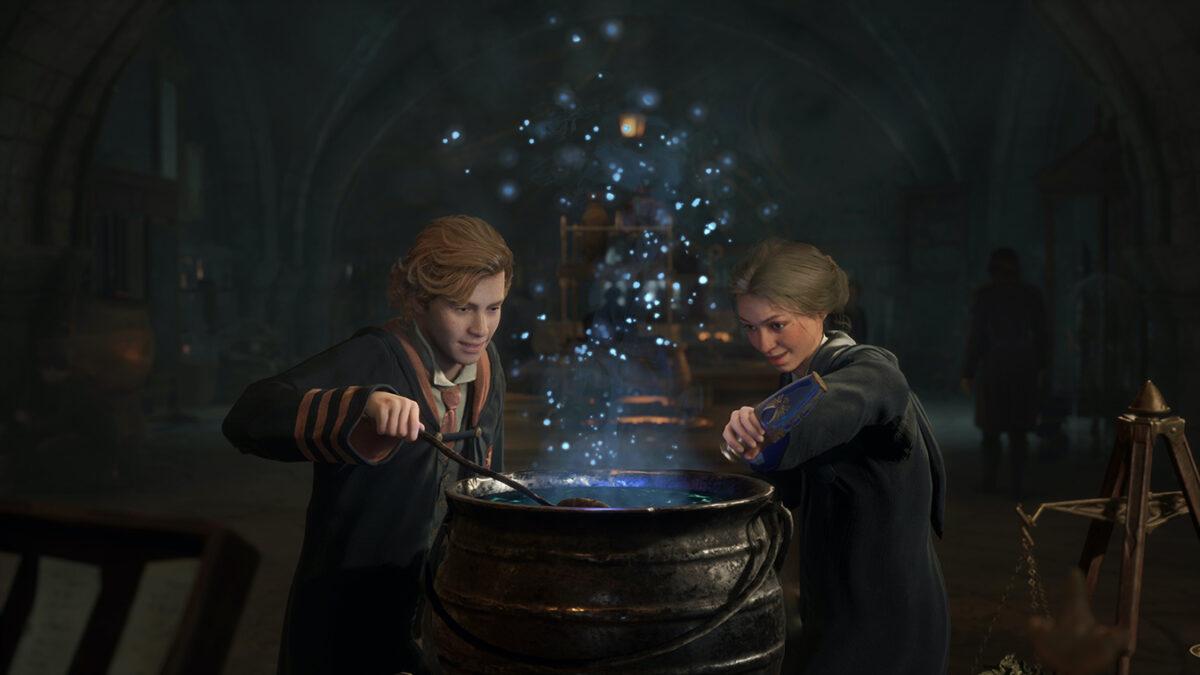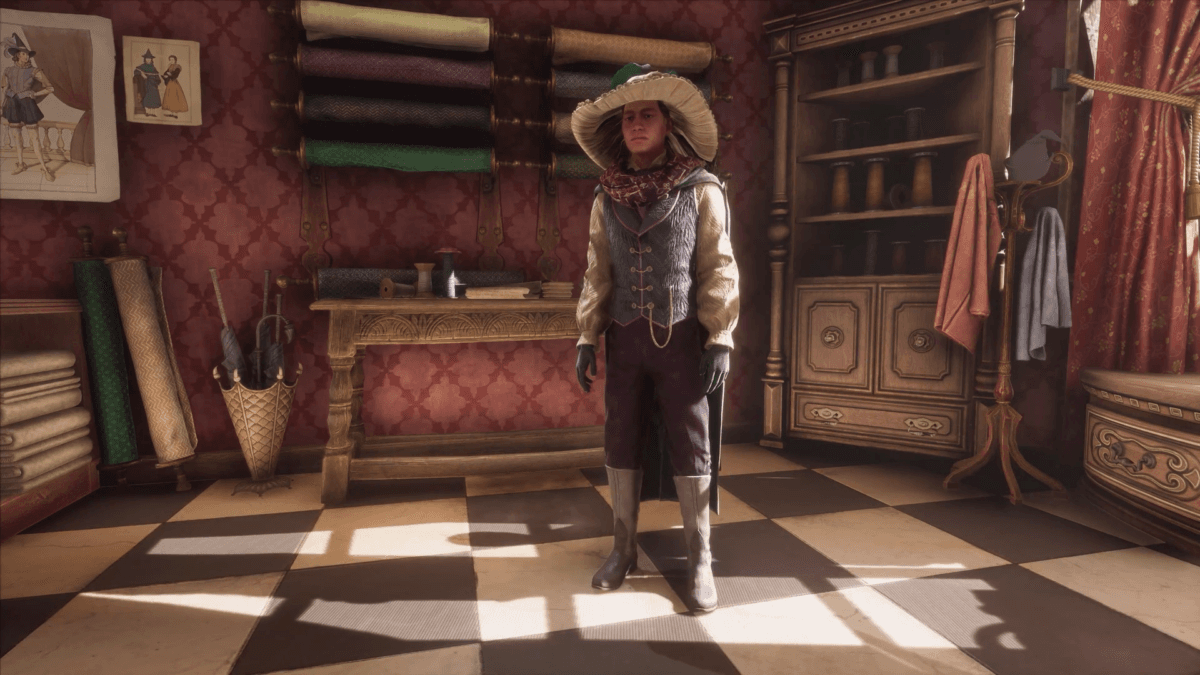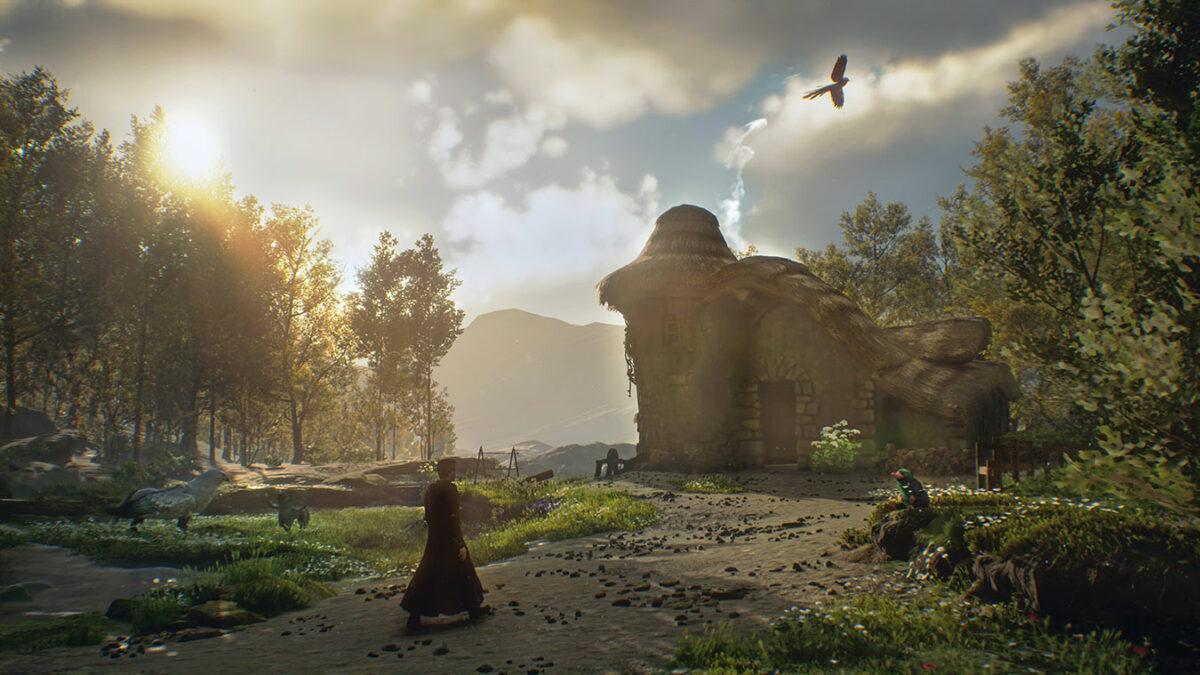Hogwarts Legacy
Written by - Codiak
Updated: June 21, 2023
|
Posted: February 6, 2023

Before we can even begin, we need to pause and thank Warner Brothers Entertainment, Avalanche Software, and the development team over at Portkey Games for providing us with an early opportunity to step foot into Hogwarts Legacy. It’s an amazing opportunity that we don’t take lightly, and it was truly an honor to be trusted amongst a handful of other creators with access.
When I say Hogwarts Legacy is a labor of love, I truly mean it. This game is through and through a magical experience top to bottom, and few other games offer this level of world building and immersion. To be fair, the team has some great source material to work with, but so did a handful of other Harry Potter-inspired games that came before. I think it’s safe to say the team has finally cracked the code.
Now, don’t get me wrong, are there things that could be improved? Absolutely, and we’ll touch on those, but the overall experience is nothing short of magical, a full-on fan service to the leagues of witches and wizards who have been waiting for this game. We say this having played over 80 hours, nearly non-stop since we were granted access. There’s still so much more to discover and explore within the game, and it took everything in us just to sit down and write this video because the urge to keep playing is real.
Now I want to be transparent, have we “beaten” the game? No, and that’s okay. Open world experiences are a whole different beast, but with the time we did play, I can confidently say we saw a majority of the content, poked and prodded at all the major systems, and really explored where the game is at its best and when it drops the ball.
EARLY EXPERIENCE
Hogwarts Legacy has a lot to set up. We’re in the 1890s, a completely different time period from the books and movies. We have new characters, new stories, and even some new locations to get accustomed to. The team introduces a lot, but we’re instantly ushered into the mystery, and we were hooked on the magic from the very beginning.
Arriving as a fifth year, we have a lot to catch up on. New spells to learn, professors and students to befriend, and a whole castle filled with secrets to explore. Our first dozen or so hours of playtime, we felt, were just spent exploring and getting lost in Hogwarts. Every door, and I mean every door opens and leads you somewhere new that you’re just not quite sure if you’ve seen before. The world-building we’re woven into is just breadcrumb after breadcrumb. Before you realize it, you’re so far removed from your original objective, you’re not sure if you even care about it anymore.

Once you choose your house, you’ll be placed in your common room. While these aren’t major hubs or constant destinations throughout the game, it’s an essential starting point. Knowing that, the team still put an insane amount of work into every detail, which kept me in the common room for longer than I’d like to admit, exploring every minor detail of things that were intentionally put there purely for my enjoyment as a player.
That’s a thread that continues to be woven through your entire experience. We’re left simply basking in the feeling of being in the wizarding world, enjoying what’s been crafted for us. Every painting, every statue, every texture is purposely built to wrap the player in that true Hogwarts experience.
Once you decide to actually work through some progression, bits of story are tactfully sewn in to give us just enough information to complete our next task and create that thread of mystery to entice you towards that next objective. We’re also given plenty of choices and freedoms to complete things on our own terms. Complete a major story moment? Great, you can go unlock new spells via side assignments. Or go explore and begin tapping into the expansive floo network, the fast travel system within the game. The choice is yours and we were very pleased with the amount of choice we had to control our own destiny
The castle feels like a never-ending maze. I don’t know if I’ll truly ever feel like I know where I’m going, but after constantly running through its halls things begin to feel familiar. Every door opens and leads you to a new room, or path, of maze-like corridors with secrets to explore. No painting is left untouched, and everything seems intentional. Don’t feel bad if you stop a dozen times on your first day just to soak it all in. You might even consider taking the time to explore the castle completely before really diving into progression, unlocking floo points so you can easily navigate the grounds when you’re ready to tackle some content.
Once you start engaging with your class curriculum, the game picks up, and it’s a great experience. I wasn’t sure how the team would deliver this part of the adventure, but I was glad these ended up being essential quests. They were the perfect bite-size experiences, only delivering what you needed in that moment, and didn’t drag out the sequence leaving you sitting through filler content. The team also threw in various mini-games in class settings to help you immediately use and become familiar with your new found spell. Nothing felt like busywork or non-important, and it all lent itself to me feeling like a more powerful wizard.

Tied to the class structure were side quests that the professors occasionally assigned. While not essential at first, many are tied directly to unlocking further story progression, and some are downright mandatory in order to access some secrets within the world. But let me be clear, nothing ever felt like a chore. I wanted to unlock that next spell so i could be ready for whatever the game threw at me.
Sprinkled throughout the rest of the castle are countless collectibles, a whole slew of additional side quests, and so much more to keep you busy for hours on end. Nothing about the experience left me disappointed. The castle feels alive with students congregating in nearly every room playfully experimenting with new spells or planning out their next adventure. While not the true “lifecycle” experience other massive games promised, it hardly matters. No matter what part of the world you’re running through magic is just abundant and the constant chatter and small actions of NPCs around the player help bring all of that to life. That experience never waned either. As you start to leave the castle more often, you’ll only come to appreciate returning that much more. Much like a college student returning to their small hometown after being away for months Hogwarts felt like home, and that’s largely in part to how lived in it feels.
As you progress, you’ll venture out of the castle and quickly gain access to exploring the world on your broom. And I’ll admit flying was something I was a bit worried about going into the game. I thought the system would feel clunky or awkward, but that’s not the case. Is there a small learning curve, sure, but being able to travel around a majority of the world from one hundred feet above adds a whole new perspective to the experience. Let’s not fool ourselves there’s nothing overly intricate about flying, but it’s an important experience that the developers deliver on… now Quidditch, that’s another story, hopefully something we’ll be able to talk about in the future.
Of course, we’re not going to spoil all of the different locations within the game, but I will say the concept of a living, breathing world can be felt throughout every corner of the game. From the shops in Hogsmeade to the gardens of even the smallest hamlet, the world changes around you and leaves a lasting impression on you as time seemingly moves everything forward. Add in the game’s day/night cycles and incredible season changes, and it’s a recipe for success that kept us coming back time and time again.
PROGRESSION
No game, even ones with this much world building, can get by on looks alone. When the chips are down, a beautiful world is only part of the experience. Hogwarts Legacy is an RPG, after all, and that means the journey from fledgling 5th year to a powerful wizard, able to control ancient magic, needs to be fulfilling.
We commonly think of leveling as the driving force behind progression. However, I rarely caught myself ever thinking about or even looking at my character’s level. I was so focused on exploring and experiencing everything around me that the XP just flowed in, and as a result, I ended up actually overleveled. I never ran into my character’s level being the reason I couldn’t progress, and I’ve got to be honest, that felt incredible. Now don’t get me wrong, you are gated on progression, at times, by level, but it’s usually only one of the factors. Often progression is tied to meeting a small list of requirements before you can continue your adventure. Levels are an aspect of progression; it’s just one that seems to have little impact, and I’m not sure it will ever really get in the way of anyone’s time in the world.
I rarely caught myself ever thinking about or even looking at my character’s level. I was so focused on exploring and experiencing everything around me
What is more important to your progression are your spells and the skills you have at your disposal. Simply put, the team absolutely nailed this experience. This is hands down one of the most satisfying systems we’ve experienced in quite some time, and the team has effectively “set the bar” for how magic can work in a traditional RPG. Is it a completely groundbreaking system, magic the likes of which we’ve never experienced? I wouldn’t go that far, but in terms of being able to control magic like a boss, the team hit this one out of the park.
Every spell feels impactful, and each talent point that augments that spell is meaningful. None of the spells feel like fillers, and your ability to use them all on a regular basis is quite satisfying. Be it in combat, solving puzzles, moving throughout the environment, or simply causing a little chaos. The talent points change up the spell’s function in a meaningful way, adding things like an AOE to one of your fire spells or increasing the range of your all-important Revelio utility spell. Each one gives you something tangible to try out in the game and augments your abilities, which is a great feeling and a system we truly loved interacting with.

If spells are the highlight, then gear definitely falls much further down the ladder. Gear in and of itself, including gear stats, the trait system, and the overall feeling of meaningful gearing, just isn’t satisfying. It’s a simple system, let’s just put it that way. Our character is built around 3 basic stats: health, offense, defense. And the gear itself only works to amplify either offense and/or defense. For any of you buildcrafters out there, this is an aspect of the game that might fall a bit flat. Even on the hardest difficulty, something we chose to tackle on one of our playthroughs, gear was a factor, but not a noticeable one.
There is a trait system, and those traits can be added to gear to buff your damage output or decrease damage taken, but almost all traits in the game boil down to very minor, and arguably unknown and unimportant passive changes. I’ll admit it’s just not something we can gush over. It’s functional but clearly not the focal point of the game.

The real reason this doesn’t matter is that gear plays second fiddle to the cosmetics system, which is a huge part of the Hogwarts Legacy experience. Just about every activity will reward you with a cosmetic item in some variety. A lot of the more desired looks will, of course, be locked behind challenges, progression, and collections. The team goes above and beyond here, ensuring players have plenty of choice and probably one of the most accessible transmog systems we’ve ever experienced in a game. From the moment you get a piece of gear, you can hop into the menus, find that exact item as an appearance, and change up your look. There’s no system to unlock, no prerequisite, no cost associated with transmog…just a system that wants players to embrace whatever look they want to achieve at any time.
ROOM OF REQUIREMENT
Hogwarts Legacy is so much more than spells and gear; that’s just one aspect of a massive game. As we pivot to talking about something else, I want to be honest with you all: I was not particularly looking forward to the Room of Requirement. I’ve never been one for player housing, especially if it didn’t have any real game-changing effects. I figured we’d be forced to sit through context menus and long instruction sets just to get started, but thankfully, that’s not the case.
I’m happy to report that my expectations have been shattered, and the team manages to masterfully guide players through each important subsystem and option. You’re introduced to the Room of Requirement through Deputy Headmistress Weasley, which isn’t really a story spoiler since we’ve known that well ahead of launch. Professor Weasley fulfills her role as your Hogwarts guide, instructing you through each aspect of the room. This is a hands-on learn-by-doing approach, and one that I was incredibly thankful for.
Everything you see within the Room of Requirement is customizable. Want a gothic look? Done. Enjoy a more botanical vibe? Snap your fingers and make it happen. Deek the house elf will even modify room lighting if you want to bring everything together. It’s incredible the amount of customization we’re given here, and as you explore and gain cosmetic rewards during your adventures, this just adds more options to an already enticing feature.
Everything you see within the Room of Requirement is customizable.
The great thing is, there’s function to this room, and that spoke to players like me who really enjoy that intersection of function and form. The Room of Requirement allows you to become more self-sufficient in a variety of ways. The numerous potting stations will be your home for any number of magical plants that you can utilize in combat or as ingredients. The potion stations will, well, brew potions. You’ll also have access to a variety of stations to supplement your crafting materials, increasing yield or producing certain materials for building out even more stations.
We love this system. It’s simple yet fully functional. It provides just the right amount of customization while not demanding perfect optimization. It’s accessible for casual players but also important for more serious players who want to squeeze every drop of performance out of their experience. It’s a super forgiving and always rewarding experience that caters to the majority of the game’s player base.

If we venture past our now fully customized Room of Requirement and step into the awe-inspiring Beast Vivarium, an entirely new experience awaits us. This comes with the magical Niffler’s Nabsack, made famous in the Fantastic Beasts series, and it allows players to catch and transport beasts from the open world back to their vivarium. This area offers another layer of customization. Like the Room of Requirement, you’re free to adjust pretty much everything. Add statues, buildings, trees, rocks – you name it. This space is yours to make comfortable for both you and the magical creatures under your care.
As their primary caretaker, you’ll need to keep your beasts happy. They need food, love, and some playtime. If you manage to keep them satisfied, they’ll kindly reward you with their unique materials, which you’ll need to use in other areas of the game, mainly for gear upgrades and applying traits at your loom in the Room of Requirement.

We’re given access to a few stations to help ease the burden of beast care, ranging from auto-feeders to breeding stations. This system is a casual fan’s dream, and I’m happy to say our time spent inside the vivarium was super enjoyable. Although much of the experience can be automated, we still spent a decent amount of time manually interacting with the many creatures in our care. It’s just fun, plain and simple. Even down to each toy in the toybox being a preferred item for a specific beast, you could see the joy on the face of a Mooncalf as you pulled out the Moonball. I caught myself sitting back like a proud parent, watching them on the screen enjoy their new toy. Simple and immersive systems like this truly elevate the gaming experience, creating something so accessible yet still wildly satisfying.
CONCLUSION
It’s hard not to gush over Hogwarts Legacy. I know a fair number of people out there were thinking the game would flop, but after 80 hours with the game, I’m confident that Hogwarts Legacy is going to cement itself in the history books. The game is a massive achievement on so many different levels, and from the world-building to the combat, it nails nearly everything, creating a Wizarding World experience the likes of which we have never seen in a video game. We highly recommend Hogwarts Legacy to absolutely anyone looking for that spark of magic.






